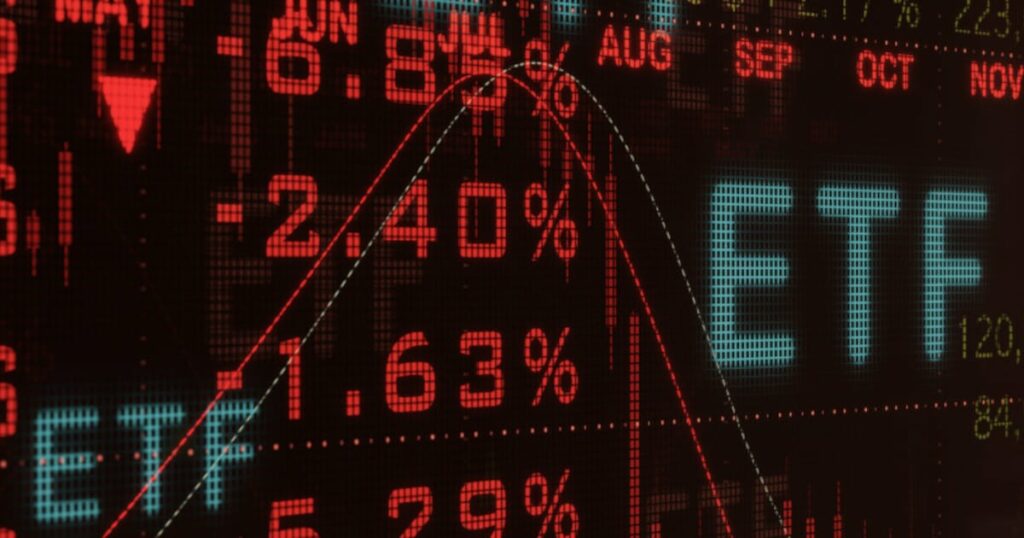KISS Investing in 2023
Please enjoy this updated version of weekly commentary from the Reitmeister Total Return newsletter. Steve Reitmeister is the CEO of StockNews.com and Editor of the Reitmeister Total Return.
Click Here to learn more about Reitmeister Total Return
It been roughly 40 years since investors have been faced with high inflation as the cause of a recession and bear market. And yet we have been dealt 5 bear markets since that time.
The point being that the majority of today’s investors have either never seen inflation cause a recession… or it is so far back in the memory banks that they don’t know how to properly react to the information in hand.
This begs us to get back to KISS investing.
Instead of what it usually means: Keep It Simple Stupid
In 2023 we will go with: Keep Inflation Separate Stupid
The reason for this pearl of investing wisdom will be fully illuminated in this week’s Reitmeister Total Return commentary.
Market Commentary
There have been quite a few joyous bear market rallies this past year based on the notion that inflation was cooling…which would mean the Fed would pivot to more dovish policies soon… which eventually fell apart when the Fed dumped cold water on the situation.
I sense the same set up is taking place now coming into their February 1st rate hike decision and announcement. And that is why I continue to be bearish even as the S&P 500 (SPY) is flirting with a breakout above the long term trend like (aka 200 day moving average) @ 3,978.
Yes, one could say that we have closed above for 2 straight sessions. Yet hard to call it a breakout when the psychologically important 4,000 level looms large overhead. Until we break above that key hurdle, then the bears are still in control.
Back to the KISS theme: Keep Inflation Separate Stupid
Bulls continue to not appreciate the seriousness of the Feds higher rate mantra about “a long time”. I sense that message will be shouted again from the rooftops at their next meeting on February 1st leading to another stock sell off.
To be clear, there is a softening of inflation. No two ways about it. However, sticky inflation in wages and housing will have the Fed maintaining their restrictive policies a while longer only increasing the odds we descend into recession in the first half of the year.
And over the past couple weeks several Fed officials were quoted repeating this higher rates for “a long time” mantra. That includes Chairman Powell. So the idea that only a couple weeks later on February 1st they would say the long time is now over is borderline insane.
Thus, when that message does come through loud and clear in a couple weeks, we will likely see a retreat from recent highs just like we did in mid August and early December. This is why I remain quite bearish.
However, that is truly missing the main point of today’s commentary which we will pivot to now. That being a focus on inflation is completing missing the much more important signals coming from the economy.
That indeed we have an economy teetering on recession. And that should hold MUCH GREATER sway in investor decision making than the state of inflation.
You have heard me write enough on the worsening economic outlook to induce carpel tunnel syndrome. So today I am going to lean one of the industry’s heavyweights to help explain why the market outlook is not just about inflation. And why it should be separated from the bigger recession question that is usually at the forefront of the bull/bear debate… and in time will likely return to the center when investors realize their focus on inflation was misguided.
I have often quoted from John Mauldin in the past because he does such a great job of breaking down “wonky” economic concepts to make it understandable. He was at his level best once again this week with his article: The Punchbowl is Gone.
The title is mean to say that the good times afforded the economy by easy money policies are now gone. And thus the road is tougher from here for the Fed, corporations and yes, investors.
In this article he shares a lot of thoughts he rounded up from other leading investment thinkers. So now I am going to share the best of that article to help round out our understanding of the road ahead of us (spoiler alert: still quite bearish).
“…bond market wizard Jeff Gundlach placing this year’s recession odds at 75%. That seemed low to me…”
Samuel Rines of CORBU adds; “No one wants to say, ‘a recession is fine.’ But the FOMC is highly implying it.”
“Could worse conditions still be coming? Sure. Fed policy changes have lagging effects. But from the FOMC’s perspective, the current strategy seems to be producing the desired benefit (lower inflation) without undesirable consequences (unacceptably high unemployment or credit markets crashing). This gives them room to continue.”
David Rosenberg sees a 100% chance of recession this year for the following reasons: “The seeds for the 2023 recession were sown a while ago by the relentless decline in the Conference Board’s leading economic indicator, which has now fallen for nine consecutive months. The data go back to 1959 and I can tell you that at no time in the past have we seen a string of weakness like this, with a 5.6% annualized contraction over such a timeframe, that failed to presage a recession within a quarter or two. Call it nine for nine back to fifty-nine. The recession is staring us in the face (and if it is so ‘priced-in,’ why is the consensus calling for positive EPS growth for next year?).”
Tuesday provides yet more proof of the deteriorating economy with The NY Empire State Manufacturing report plummeting to -32.9. The lowest level since May 2020 when Covid was ravaging the economy. This and Chicago PMI are considered the most influential of the regional manufacturing reports and both are showing ill health.
So yes, bulls started 2023 in charge thanks to a combination of new year optimism plus signs of moderating inflation. And yes, they may keep the reigns a little longer with FOMO creeping higher.
Let’s sum it up.
To join the bull party now as recessionary odds are on the rise seems quite unwise. And the same could be said for getting bullish on the hopes of a Fed pivot on February 1st. This seems downright fanciful given the facts in hand.
This is why I remain bearish at this time. I even added a 3X inverse ETF to my portfolio the end of last week as stocks were bumping up against resistance.
Down makes more sense than up. Trade accordingly.
Click Here to learn more about Reitmeister Total Return
Wishing you a world of investment success!
Steve Reitmeister… but everyone calls me Reity (pronounced “Righty”)CEO, StockNews.com & Editor, Reitmeister Total Return
About the Author
Steve is better known to the StockNews audience as “Reity”. Not only is he the CEO of the firm, but he also shares his 40 years of investment experience in the Reitmeister Total Return portfolio. Learn more about Reity’s background, along with links to his most recent articles and stock picks.
KISS Investing in 2023 Read More »










